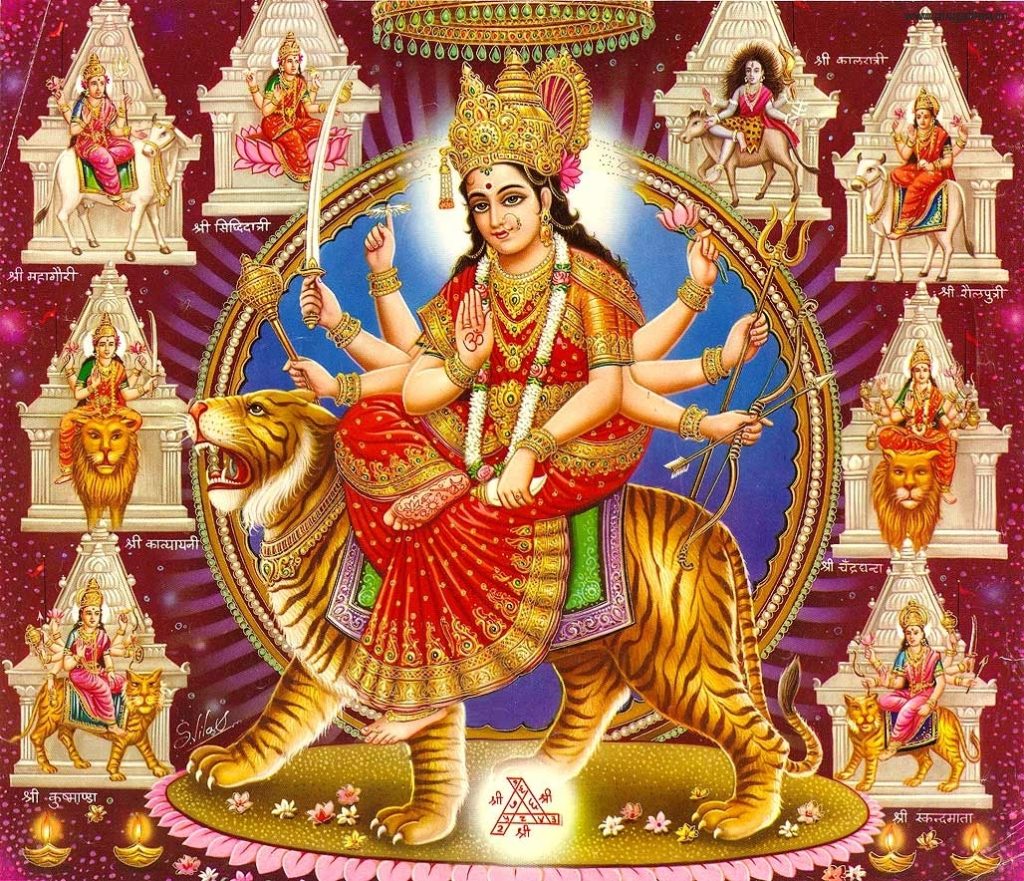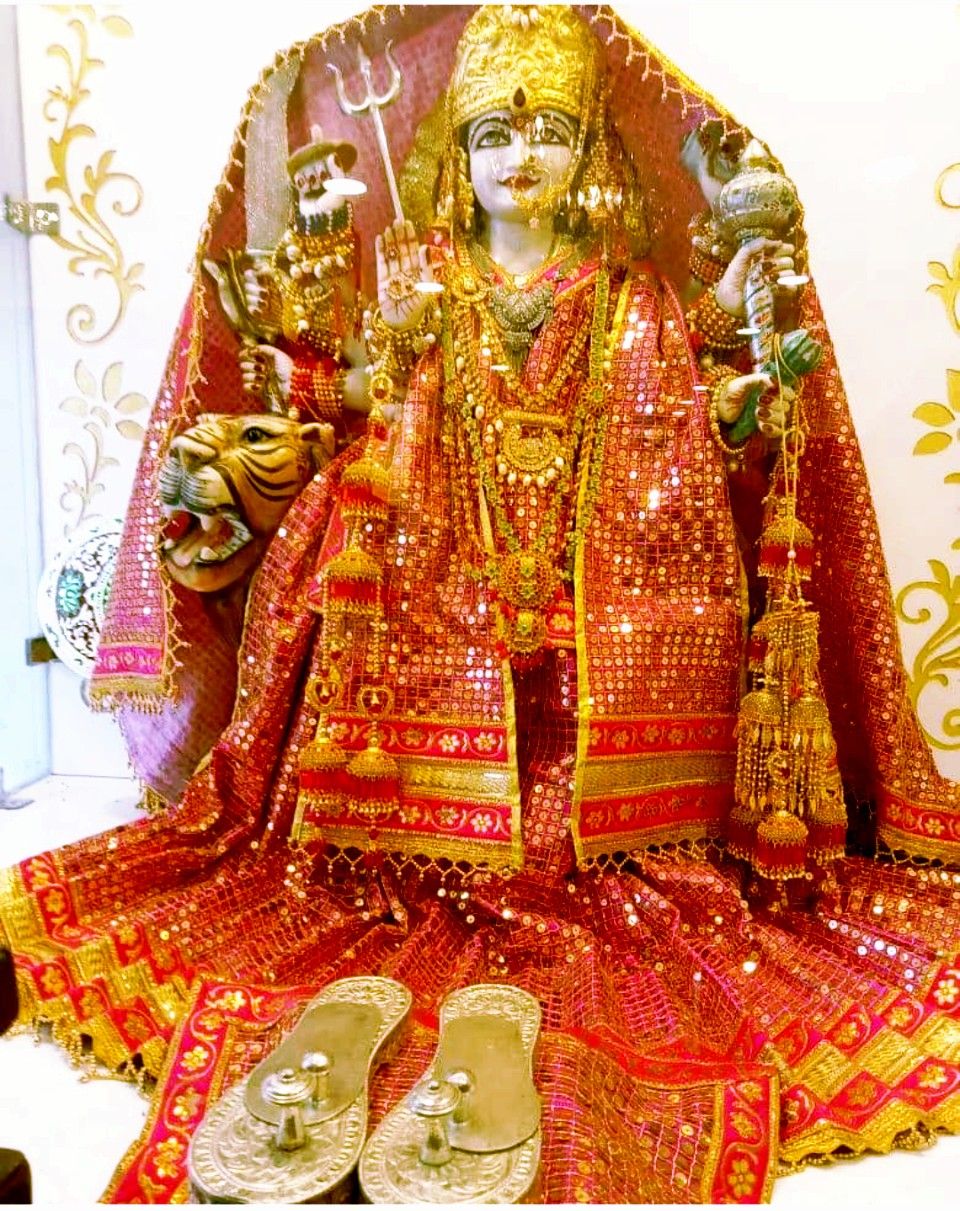Navratri is celebrated twice a year – once in the months of September or October, which is called Sharad Navratri, and again in the months of March or April, which is known as Chaitra Navratri.
Chaitra Navratri is celebrated in the spring season and is also known as Vasant Navratri. People observe the Hindu month of Chaitra, which usually falls in March or April according to the Hindu lunar calendar.

The significance of Chaitra Navratri is similar to Sharad Navratri, where devotees worship the nine forms of the goddess Durga. However, there are some differences in the way it is celebrated. During Chaitra Navratri, devotees usually avoid non-vegetarian food, while during Sharad Navratri, many people observe a complete fast or eat only vegetarian food.
Chaitra Navratri is also associated with the beginning of the Hindu New Year, and the tenth day of the festival, which is known as Ram Navami, is celebrated as the birthday of Lord Rama, one of the most revered deities in Hinduism.
During Chaitra Navratri, devotees worship the nine forms of the goddess Durga and also perform puja for Lord Rama. People celebrate the festival with fasting, prayers, and devotional songs, and they visit temples to seek the blessings of the goddess and Lord Rama. On the tenth day of Chaitra Navratri, people perform a special puja and eat prasad made of sabudana or fruits to break their fast.
CELEBRATION OF NAVRATRI
Navratri is celebrated to worship the nine forms of the goddess Druga, who represents feminine energy and power. People believe that the goddess battles against the demon Mahishasura and emerges victorious on the tenth day, which they call Vijayadashami or Dussehra, during these nine days and nights.
The festival gains importance because people associate it with the change of seasons from winter to spring (Chaitra Navratri) or from monsoon to autumn (Sharad Navratri), and believe it to be an auspicious time for new beginnings such as starting a new venture, getting married, or buying a new Vehicle and property.
Navratri is the worship of nine forms of the goddess, namely Shailputri, Brahmacharini, Chandraghanta, Kushmanda, Skandamata, Katyayani, Kalaratri, Mahagauri, and Siddhidatri.
People associate Navratri with the worship of other deities such as Lord Rama, Lord Vishnu, and Lord Shiva, depending on the region and the traditions followed, in addition to the worship of the goddess Durga. People celebrate the festival by fasting, offering prayers, singing devotional songs, and visiting temples to seek blessings from the deities.
During the nine-day festival of Navratri, people participate in the lively and energetic dance of dandiya. The dance involves twirling and stepping to the rhythm of traditional music while holding small wooden sticks. People of all ages come together to dance and enjoy the festive spirit, considering dandiya as an expression of joy and celebration. The colorful attire and upbeat music make dandiya a favorite among the youth and a memorable part of the Navratri festivities.
WORSHIP METHOD
The worship method or ritual for Navratri may vary depending on the region and tradition followed. However, here is a general outline of the worship method or ritual for Navratri
- Purify yourself – Take a bath and wear clean clothes.
- Set up the altar:-Create a small altar or mandap using a clean cloth, and place a picture or idol of the goddess Durga in the centre. You can also decorate the altar with flowers, leaves, and other decorative items.
- Light a lamp-Light a lamp or diya near the altar to symbolize the presence of divine light.
- Offer flowers-Offer flowers to the goddess and chant the mantra “Om Hreem Shreem Kleem Sarva-poojye Devi Mangala Chandike Aiym Kleem Hreem Shreem” or any other mantra that you prefer.
- Offer prasad-Offer food items such as fruits, sweets, or any other favourite dishes of the goddess to the deity.
- Chant prayers-Chant prayers dedicated to the goddess, such as the Durga Chalisa, Durga Saptashati, or any other devotional song or mantra that you prefer.
- Conclude the pooja-Conclude the pooja by seeking the blessings of the goddess and performing aarti.
THE METHOD OF FASTING
- Determine the duration of the fast– Decide on the duration of the fast, which could range from one day to all nine days of Navratri. Some people also opt for partial fasting by consuming only fruits, milk, or other light food items.
- Plan the diet– Plan a healthy and nutritious diet during the fasting period. Common fasting foods during Navratri include sabudana (tapioca), singhara (water chestnut) flour, kuttu (buckwheat) flour, fruits, milk, and yogurt.
- Avoid certain foods-Avoid consuming meat, alcohol, grains, onions, garlic, and other non-vegetarian or heavy foods during the fasting period.
- Keep yourself hydrated-Drink plenty of fluids such as water, coconut water, or fresh fruit juices to keep yourself hydrated during the fasting period.
- Seek medical advice– If you have any health conditions or concerns, it is advisable to seek medical advice before starting the fast.
- Break the fast properly-To break the fast, consume light food items such as fruits, milk, or yogurt. It is important to avoid consuming heavy or fried foods immediately after the fast.
KANJAK POOJAN
